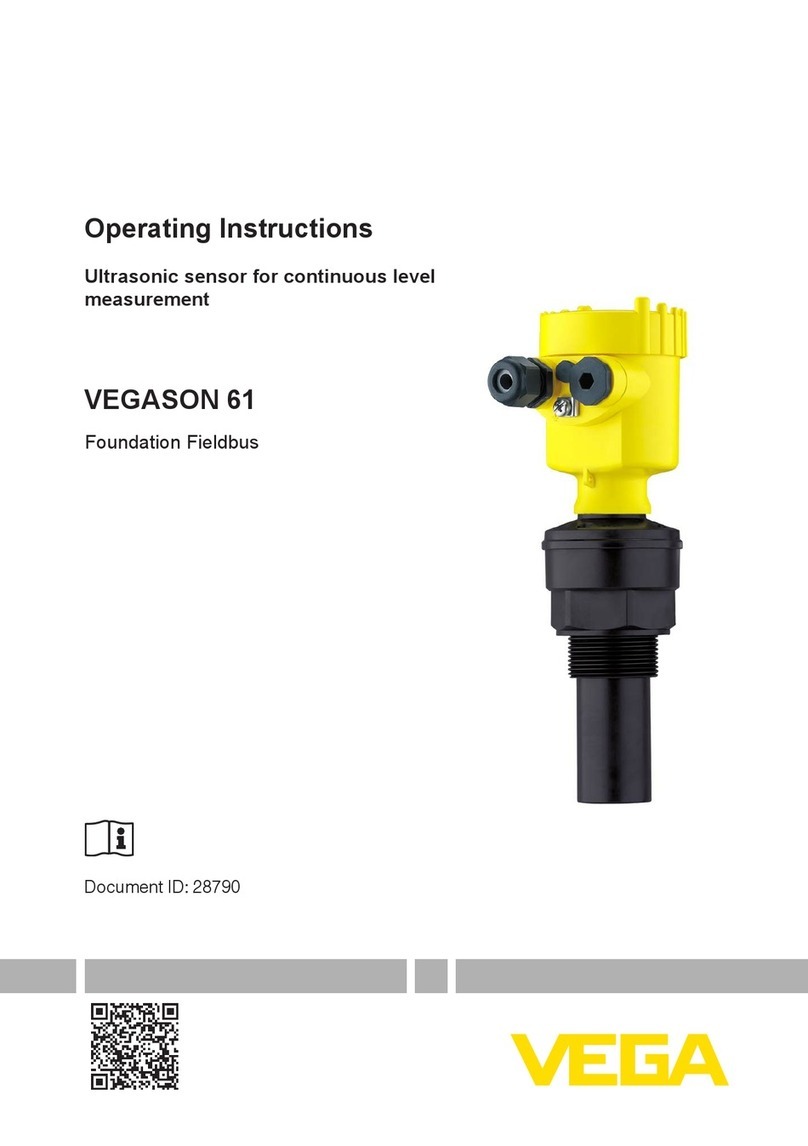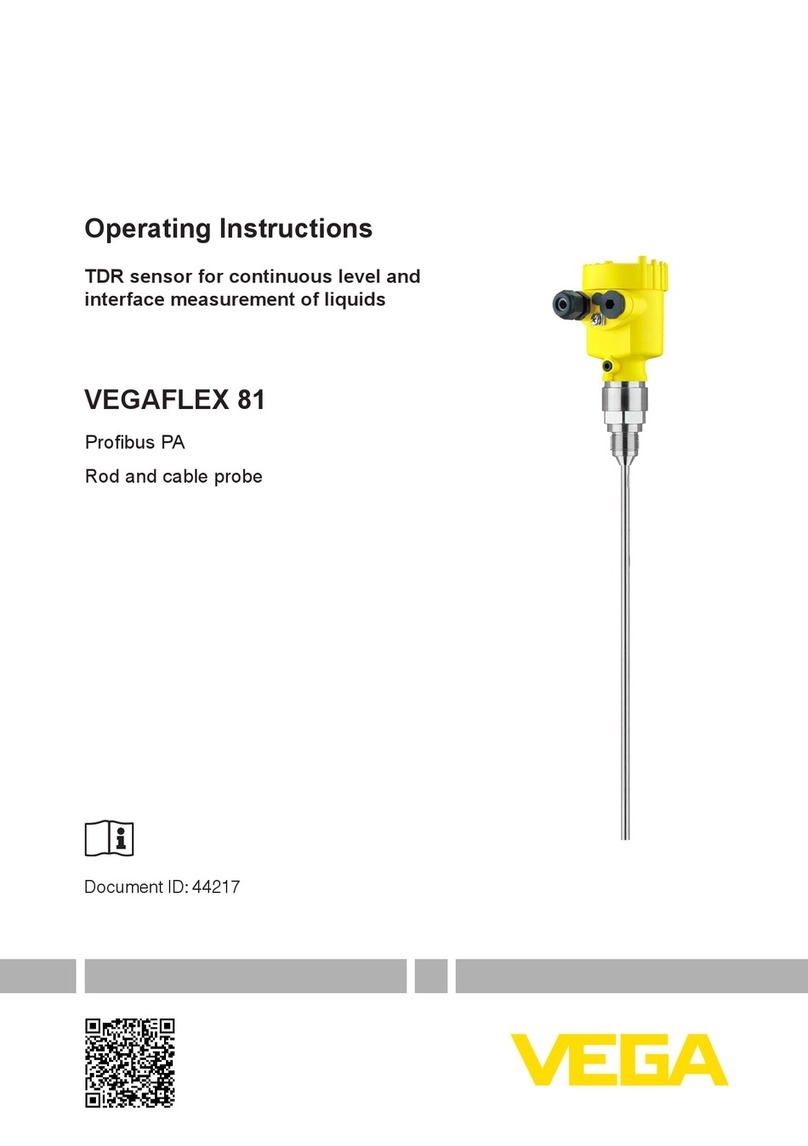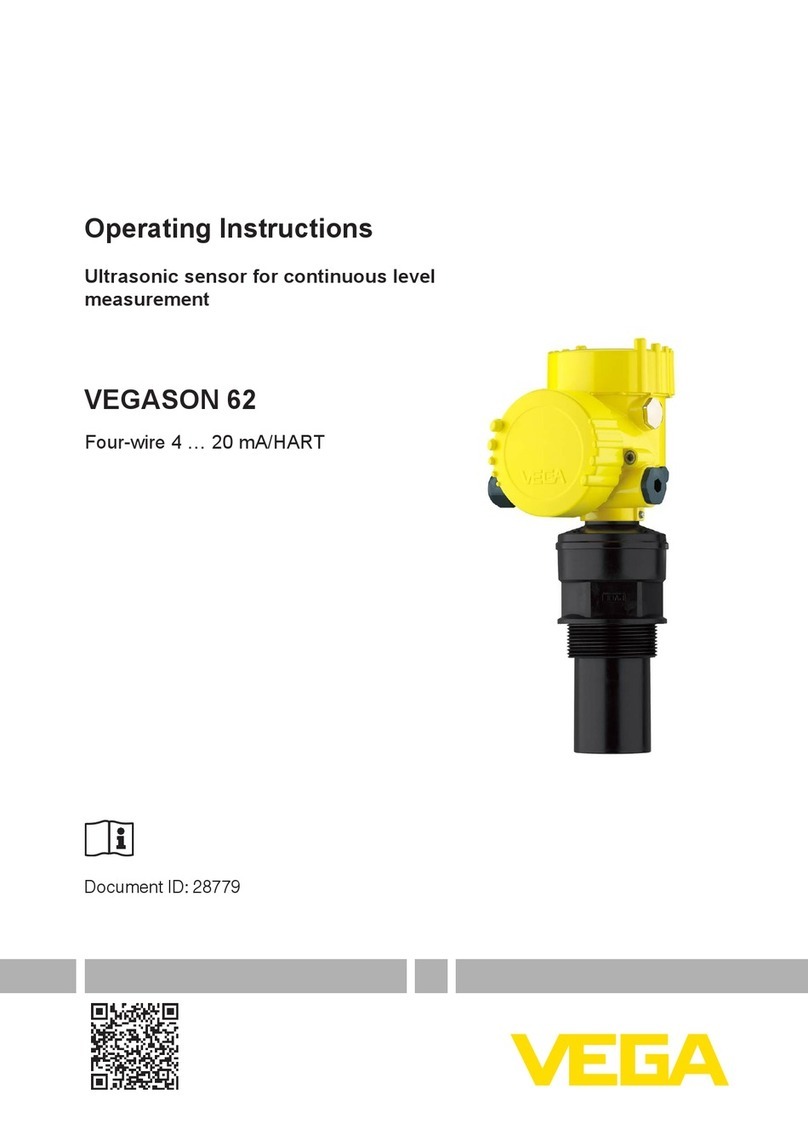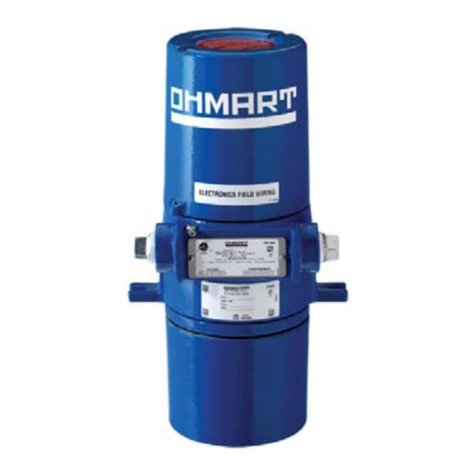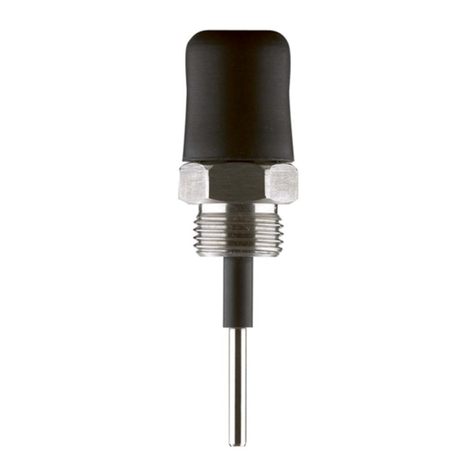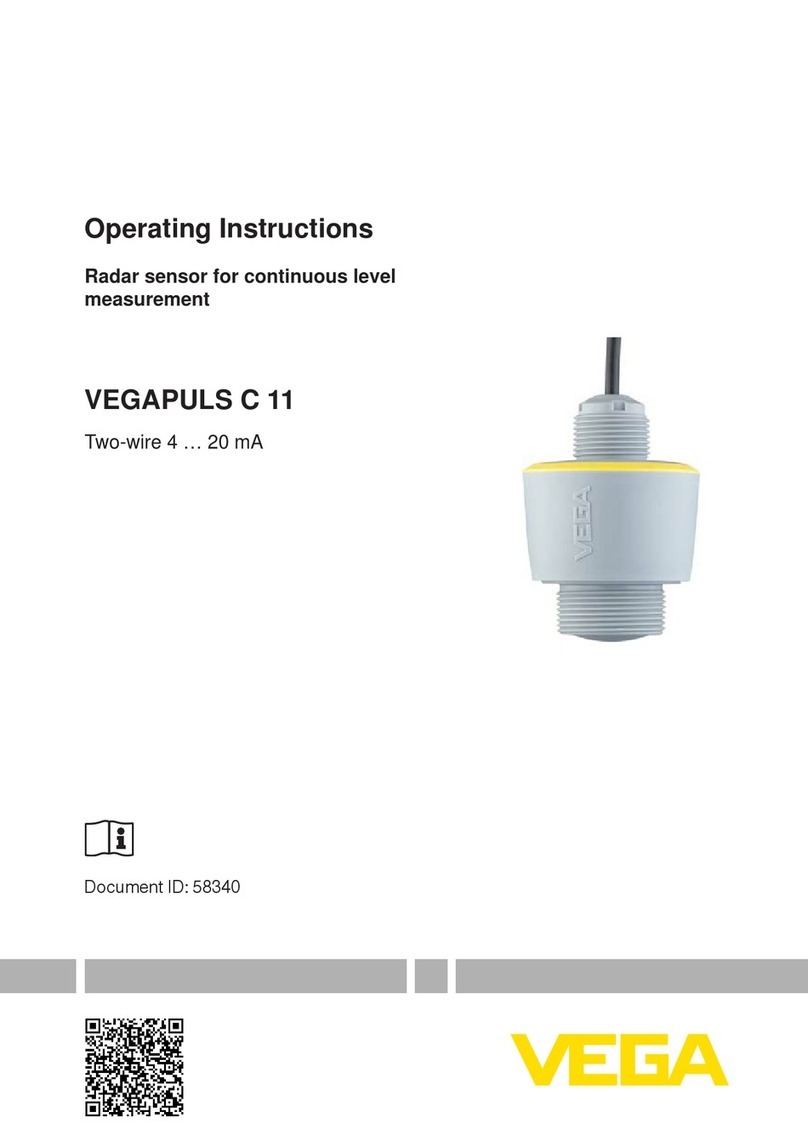
2
Contents
VEGAFLEX 81 • Two-wire 4 … 20 mA/HART
42279-EN-210914
Contents
1 About this document ............................................................................................................... 4
1.1 Function ........................................................................................................................... 4
1.2 Target group ..................................................................................................................... 4
1.3 Symbols used................................................................................................................... 4
2 For your safety ......................................................................................................................... 5
2.1 Authorised personnel ....................................................................................................... 5
2.2 Appropriate use................................................................................................................ 5
2.3 Warning about incorrect use............................................................................................. 5
2.4 General safety instructions............................................................................................... 5
2.5 EU conformity................................................................................................................... 5
2.6 NAMUR recommendations .............................................................................................. 6
2.7 Installation and operation in the USA and Canada ........................................................... 6
2.8 Environmental instructions ............................................................................................... 6
3 Product description ................................................................................................................. 7
3.1 Conguration.................................................................................................................... 7
3.2 Principle of operation........................................................................................................ 9
3.3 Packaging, transport and storage................................................................................... 11
3.4 Accessories.................................................................................................................... 11
4 Mounting................................................................................................................................. 13
4.1 General instructions ....................................................................................................... 13
4.2 Mounting instructions ..................................................................................................... 14
5 Connecting to power supply................................................................................................. 17
5.1 Preparing the connection ............................................................................................... 17
5.2 Connecting..................................................................................................................... 18
5.3 Wiring plan, single chamber housing.............................................................................. 19
5.4 Wiring plan, double chamber housing ............................................................................ 20
5.5 Wiring plan, Ex-d-ia double chamber housing................................................................ 22
5.6 Double chamber housing with VEGADIS-Adapter.......................................................... 23
5.7 Wiring plan - version IP66/IP68, 1 bar ............................................................................ 24
5.8 Supplementary electronics............................................................................................. 24
5.9 Switch-on phase............................................................................................................. 24
6 Set up with the display and adjustment module ................................................................ 25
6.1 Insert display and adjustment module............................................................................ 25
6.2 Adjustment system......................................................................................................... 26
6.3 Parameter adjustment - Quick setup .............................................................................. 27
6.4 Parameter adjustment - Extended adjustment................................................................ 28
6.5 Saving the parameterisation data................................................................................... 45
7 Setup with PACTware............................................................................................................. 47
7.1 Connect the PC.............................................................................................................. 47
7.2 Parameter adjustment with PACTware............................................................................ 47
7.3 Set up with the quick setup............................................................................................. 49
7.4 Saving the parameterisation data................................................................................... 50
8 Set up with other systems .................................................................................................... 51
8.1 DD adjustment programs ............................................................................................... 51
8.2 Field Communicator 375, 475 ........................................................................................ 51
